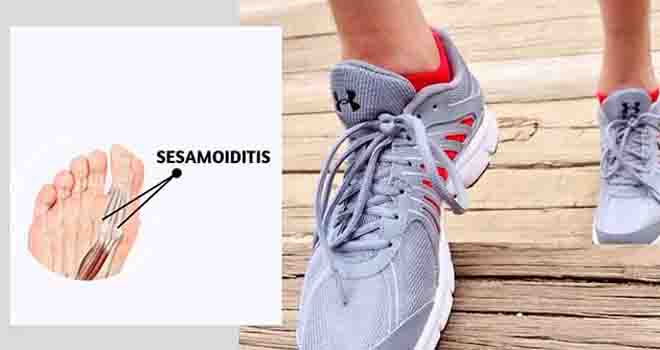Sesmoiditis

Most bones in the human body are connected to each other at joints. But there are a few bones that are not connected to any other bone. Instead, they are connected only to tendons or are embedded in muscle. These are the sesamoids. The kneecap (patella) is the largest sesamoid. Two other very small sesamoids (about the size of a kernel of corn) are found in the underside of the forefoot near the great toe, one on the outer side of the foot and the other closer to the middle of the foot.
Sesamoids act like pulleys. They provide a smooth surface over which the tendons slide, thus increasing the ability of the tendons to transmit muscle forces. The sesamoids in the forefoot also assist with weightbearing and help elevate the bones of the great toe. Like other bones, sesamoids can break (fracture). Additionally, the tendons surrounding the sesamoids can become irritated or inflamed. This is called sesamoiditis and is a form of tendinitis. It is common among ballet dancers, runners and baseball catchers.
Symptoms
- Pain is focused under the great toe on the ball of the foot. With sesamoiditis, pain may develop gradually; with a fracture, pain will be immediate.
- Swelling and bruising may or may not be present.
- You may experience difficulty and pain in bending and straightening the great toe.
